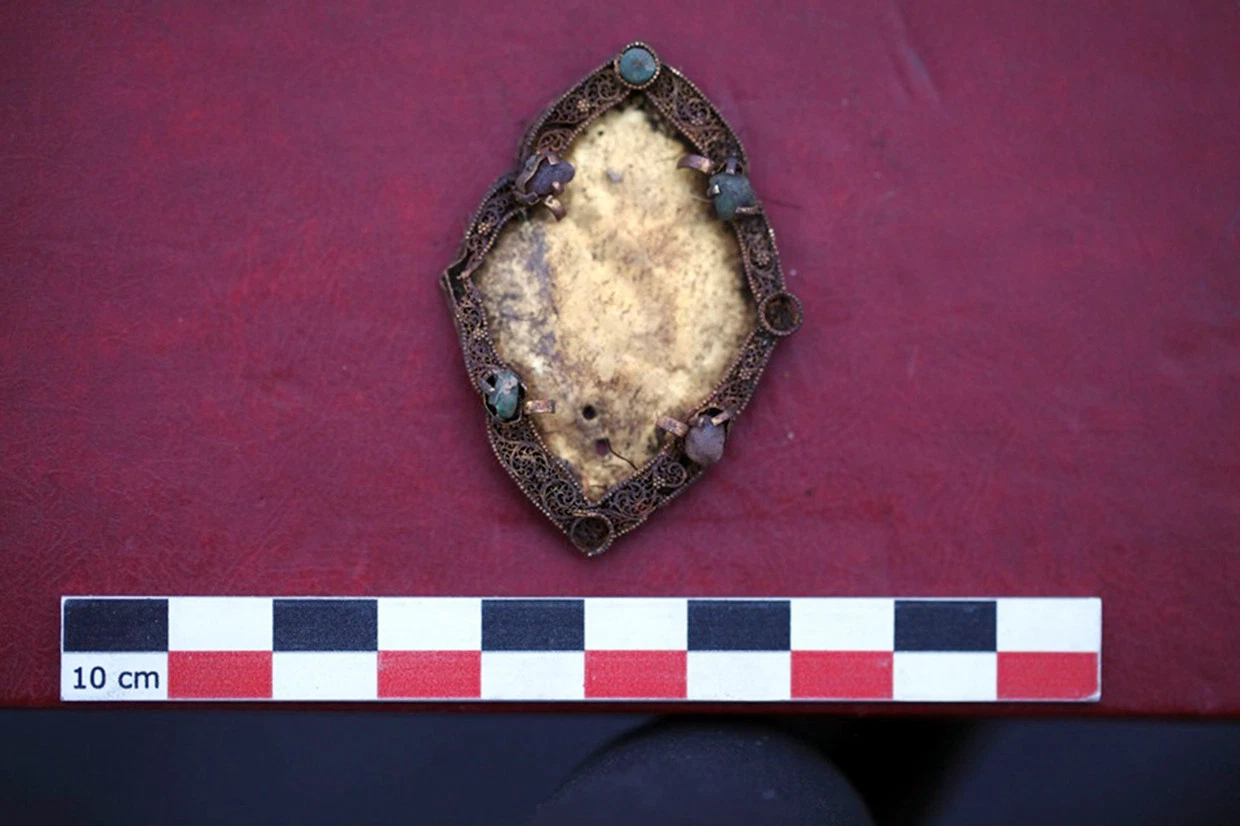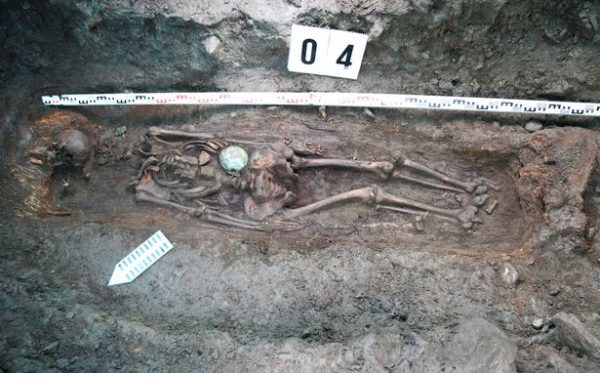Huge Amazon Woman Warrior From 14th century Unearthed in Mongolia

Siberian archaeologists and scientists have found jewelry and other precious items laid for burial with a female skeleton that dates to the 14th century, and the bones reveal that she was a remarkable, combative woman for her times.
The researchers described the find to the Siberian Times recently, saying, “The buried person we discovered is a kind of ‘Mongolian Amazon,’ a strong enough lady who (could) overcome some men.”
Professor Artur Kharinsky, one leader of the team, explained that there are skeletal indications that the woman was between 30 and 40 years old and uniquely tall for a woman of the period. She had beside her items not usually associated with the burials of women, including a bronze bowl and long, iron knife.

Kharinsky called her a kind of female fighter, yet the team suspects she was married or at the very least engaged, because of the things with which she was buried.
They know the skeleton is female because of the shape of the pelvic bones, but nonetheless plan on doing DNA tests to confirm their findings. Although the team believes she was a warrior, it wasn’t fighting that killed her, evidence showed.
Rather, she likely died of a serious illness. Kharinsky explained, “this was definitely not some battle injury. We do not see any traces of combat injury on her bones, but we presume she would have taken part in fights along with men.” She was also buried with a saddle and stirrups.
The woman warrior clearly suffered substantial physical problems during her life, he says, including bone loss. “She had lost most of her teeth during her lifetime,” Kharinsky continued. “The holes in the roots were overgrown, and growths appeared on the bones of the jaws.” The skeleton was discovered in a coffin made of an entire log, a sort of “all lumber” tomb, in a way. The dig in Mongolia is part of an ongoing excavation of two sites by Irkutsk National Research Technical University, called Urd Khyar 1 & 2.
‘Amazon woman warrior’ from 14th century found by Siberian archeologists in Mongolia. Another grave in ancient burial shows expensive jewellery brought home from Europe https://t.co/En0BiNt9En pic.twitter.com/iKGWNVHtyn
— The Siberian Times (@siberian_times) August 31, 2019
At the second site, researchers discovered the skeleton of another woman, this one described as likely that of a rich woman of the late 13th century. She was buried with costly items, including a fragment of amber from a disk; her chest bore plaques of gold, with gemstone and gold filigree.
The professor told the Times that these were, in all likelihood, given to her by a European suitor, or perhaps a husband. Prized goods were often brought back to female relatives or fiancées, by men who fought in battles who scooped up the spoils of war.
Dr. Kharinsky said that all the treasures unearthed reveal tantalizing clues about a period when Mongols stormed through many lands, including the Czech Republic, southern Germany, Ukraine, Poland and Hungary, as well as parts of Russia. “These things (in her burial site) are clearly of European origin, and could (have been) obtained by a Mongol warrior during a campaign in the West, and then presented it to his beloved one.”
The team also found evidence of her station in life, Dr. Kharinsky stated, when they discovered that, “near the bones of the right leg were found the remains of a birch bark base of the headdress called ‘boghta.’ This headdress is a characteristic part of the costume of Mongolian women of the Imperial period.”
Another Article From Us: Pure Waters of Lake Baikal in Danger From 6.5 million Tons of Toxic Waste
Unlike the female remains found in the “warrior woman’s” log coffin, however, this woman shows no signs whatsoever of fighting. She waited while the men in her family went off to war. “It (the campaign in the West) was attended by men – their relatives – who brought trophies home.”
